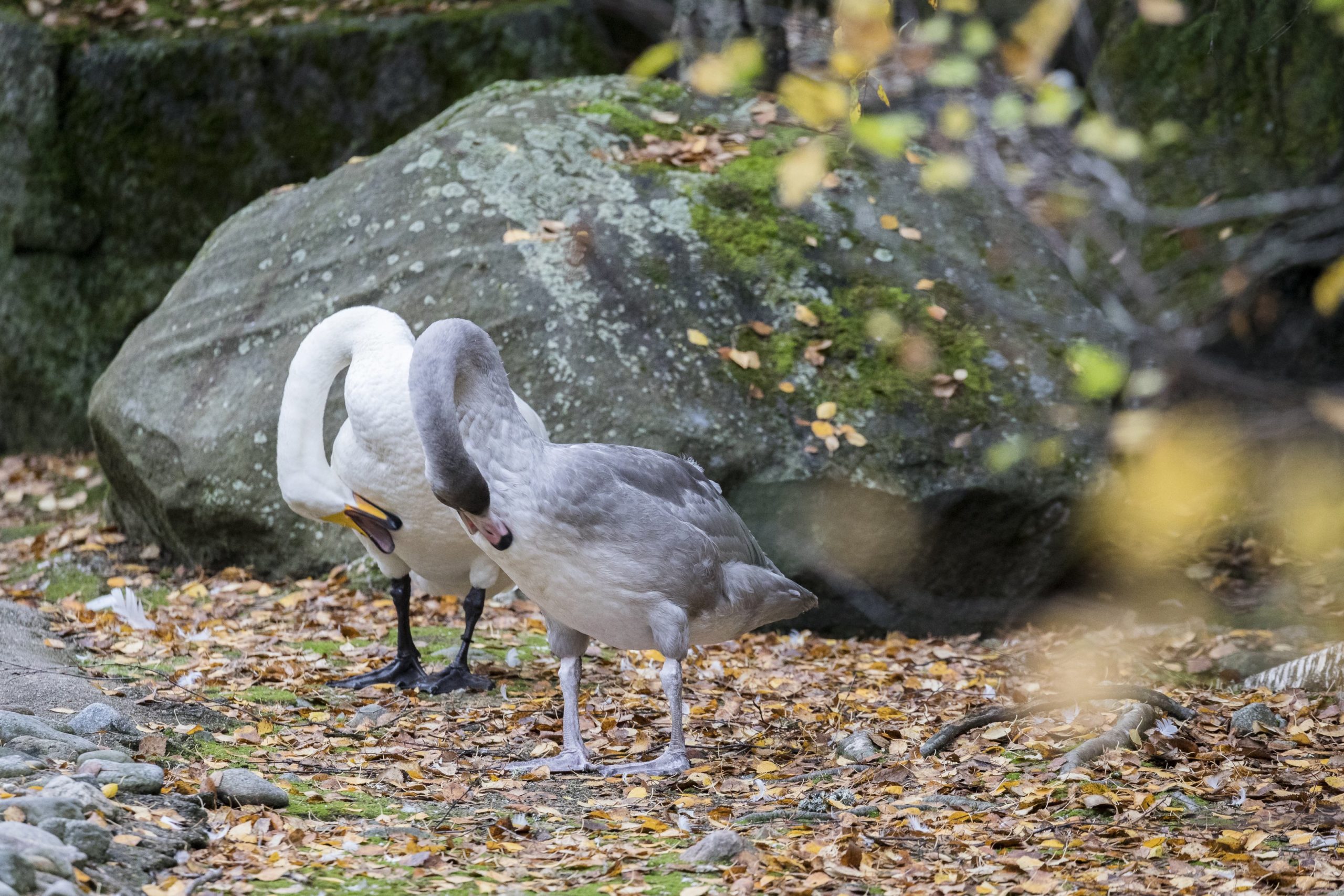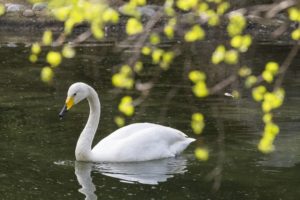
Whooper swan
LIVING HABITS
The whooper swan is a northern species found all over Finland. They breed in marshy ponds, lush swamps and sheltered bays of lakes. The whooper swan is a dabbler, diving for food from the bottom of the lake with their long neck. They feed on aquatic plants and their roots, small invertebrates, berries and seeds. A female and a male often form a lifetime relationship. The development of a swan fledgling into a flying bird takes a long time, and whooper swans leave for migration first when lakes are freezing. Some fledglings develop too late, and are left behind the migrating flight due to late nesting time or early arrival of winter. A young swan survives if it finds other swans to migrate with, finds open water and enough food, or ends up in human care for the winter. Normally, the whooper swan parents stay together with their offspring over the first winter.
PROTECTION
In the beginning of the 1900’s the whooper swan species was almost extinct in our country. The last timid individuals lived in remote untouched areas in the wilderness of the North. Regarding the rescuing of the species, the Finnish veterinarian and writer, Yrjö Kokko with his books ”Laulujoutsen/The singing swan” and ”Ne tulevat takaisin/They are coming back” played an important part. Nowadays whooper swans are fairly common in Finland.
ADAPTING TO WINTER
Whooper swans migrate to the islands of Great Britain, the Black Sea or the coasts of Western Europe for winter grounds.
Whooper swan
Cygnus cygnus
Class: Aves – Birds
Order: Anseriformes – Ducks
Family: Anatidae – Mallards, Geese And Swans
Size: Weight: 8-10kg, wingspan: 215-230cm.
Breeding: The female lays 4-7 eggs in May-June, incubation period: 35-42 days and nights. Independent in 1 year, sexual maturity reached in 4-6 years.
Lifespan: According to ringing data, the oldest whooper swan has lived to the age of 16 years.


Did you know…
Did you know that whooper swans were important birds for people in Lapland in the olden days? In the spring when food supply was often extremely sparse, the whooper swans returning from migration came to rescue: one whooper swan gave 5 kg meat, and even eggs were eaten.




